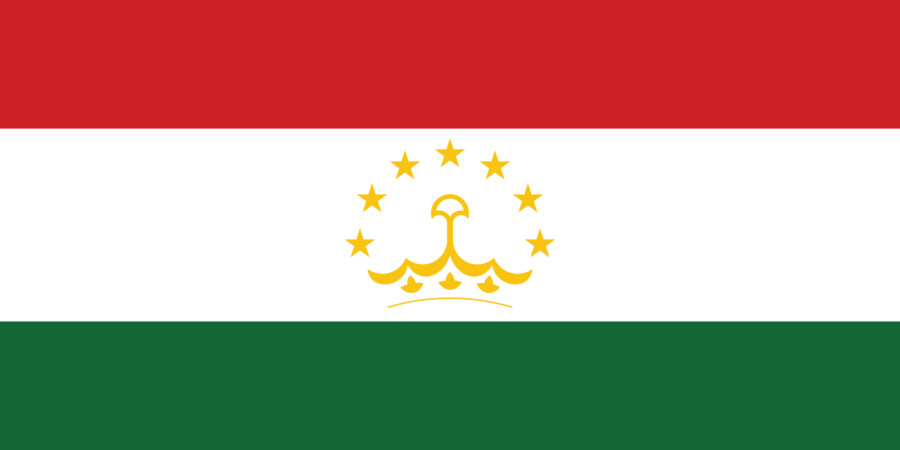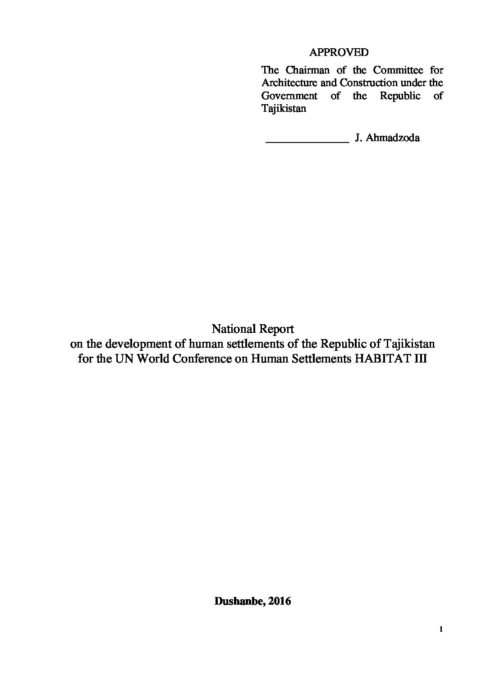
Tajikistan
Urban indicators:
| Value | Year | ||
| Surface area (sq km) | 142600 | 2014 | |
| Population (proj., 000) | 8670 | 2016 | |
| Pop. density (per sq km) | 61.9 | 2016 | |
| Capital city | Dushanbe | 2015 | |
| Capital city pop. (000) | 822 | 2015 | |
| Population growth rate (average annual %) | 2.2 | 2010-2015 | |
| Urban population growth rate (average annual %) | 2.6 | 2010-2015 | |
| CO2 emission estimates (000 tons/tons per capita) | 3586/0.4 | 2013 | |
| Population using improved drinking water sources (urban/rural, %) | 93.1/66.7 | 2015 | |
| Population using improved sanitation facilities (urban/rural, %) | 93.8/95.5 | 2015 |
| 1995 | 2005 | 2014/2015 | |
| Urban population ('000) | 1,670 | 1,799 | 2,306 |
| Level of urbanization (%) | 28.9 | 26.4 | 26.8 |
| Value | Year | |
| Urban Gini Coefficient | 0.36 | 1999i |
| Urban poverty headcount ratio based on national poverty lines | 36.1% | 2014 |
National Report:
National Report Executive Summary:
The majority of the Republic's residents live in cities, settlements and rural areas located at an altitude of 1000m above sea level. More than 25% of rural population live at the zones between 1000 and 2000m, and only 5% of the rural population live at altitudes above 2000m in the mountain regions of the republic.
Currently, there are 17 large and medium cities in the country, 57 urban settlements and more than 3,900 villages. The distribution of population between urban and rural areas is uneven, the urban population is 27%, whereas the share of the rural population accounts for 73%. In Tajikistan, where the most of the country is covered by mountainous, urban development is slow, which means, that Tajikistan is poorly urbanized country.
Most of the towns are small towns and urban settlements – they are relatively small settlements with a population of 10-40 thousand people. The greatest number located in northern Tajikistan, Hissar, Vakhsh and other valleys of the republic. The lowest proportion of urban population is typical for mountain areas of Central Tajikistan (Districts of Republican Subordination) and Gorno-Badakhshan Autonomous Region (GBAO).
The growth of urban population was noted in the thirties as a result of overall industrial development of the country. With the general growth of the population in 1917-1985 by 4.4 times, the urban population has increased almost 15 times. And now, since 1990, urban population growth is relatively slow.
Statements by Tajikistan:
-
Habitat III Plenaries
Statements by other countries on behalf of G77 and China:
-
Habitat III Plenaries
-
Intersessionals: Informal Intergovernmental Meetings (May 2016)
- Statement - 18 May (by Thailand) - English Made by Thailand on Behalf of G77 and China
- Statement - 18 May (by Jamaica) - English Made by Jamaica on Behalf of G77 and China
- Statement - 19 May (by Jamaica) - English Made by Jamaica on Behalf of G77 and China
- Statement - 19 May (by Kenya) - English Made by Kenya on Behalf of G77 and China
- Statement - 20 May (by Jamaica) - English Made by Jamaica on Behalf of G77 and China
- Statement - 20 May (by Thailand) - English Made by Thailand on Behalf of G77 and China

